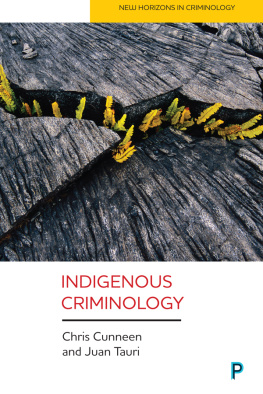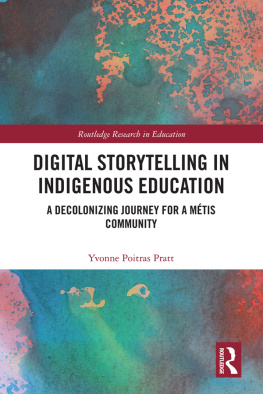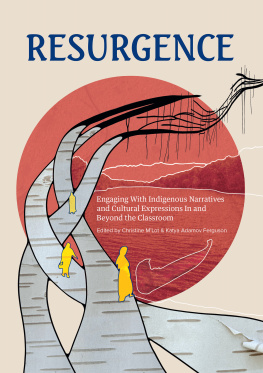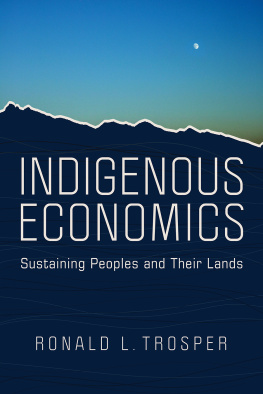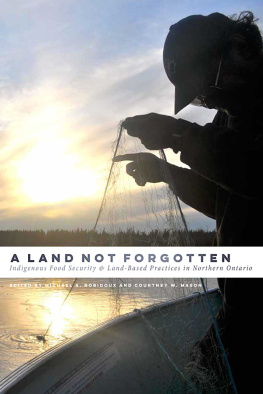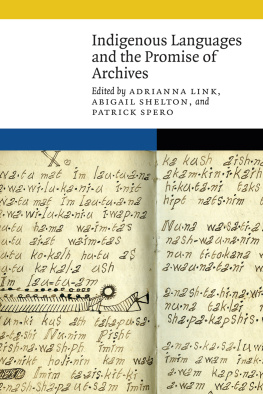Warning: Readers should be aware that this book includes names of deceased people, which may cause sadness or distress to Indigenous peoples.
Restorying Indigenous Leadership: Wise Practices in Community Development Copyright 2015 by the contributors Any unauthorized reprint or use of this material is prohibited. No part of this book may be reproduced or transmitted in any form or by any means, electronic or mechanical, including photocopying, recording, or by any information storage and retrieval system without express written permission from the publisher, or in the case of photocopying, a license from the Canadian Copyright Licensing Agency, Access Copyright.

Box 1020, Station 21
107 Tunnel Mountain Drive
Banff, Alberta, Canada T1L 1H5
www.banffcentrepress.ca
20 19 18 17 16 15 149 8 7 6 5 4 3 2 1
Cover designed by Grace Cheong.
Cover photo: Lonny Kalfus/Getty Images.
Interior designed and typeset by Brian Morgan.
Banff Centre Press is pleased to acknowledge the generous donors who have given financial support to the Indigenous Leadership and Management program and the Wise Practices Symposium at The Banff Centre, especially the Rural Alberta Development Fund.

Library and Archives Canada Cataloguing in Publication
Restorying indigenous leadership : wise practices in community development/edited by Cora Voyageur, Laura Brearley, and Brian Calliou. Second edition.
Includes bibliographical references.
Issued in print and electronic formats.
ISBN 978-1-894773-83-6 (paperback).
ISBN 978-1-894773-84-3 (epub).
ISBN 978-1-894773-85-0 (mobi)
1.Indian leadership.
2.Community leadership.
3.LeadershipCross-cultural studies.
4.Indigenous peoplesPolitics and government.
5.Indigenous peoplesEconomic conditions.
6.Art, Aboriginal Australian.
7.Native peoplesCanada.
8.Indians of North AmericaUnited States.
9.Aboriginal Australians.
I.Voyageur, Cora Jane, 1956, author, editor
II.Calliou, Brian, author, editor
III.Brearley, Laura, author, editor
GN380.R63 2015305.8C2015-901479-4C2015-901480-8
Printed and bound in Canada
Dedication
We would like to dedicate this book about restorying Indigenous leadership to two Indigenous elders who have been very influential to the work we do in our Indigenous Leadership and Management program area at The Banff Centre. First, we dedicate it to Elder Tom Crane Bear, a member of the Siksika Nation, part of the Blackfoot Confederacy, in Treaty 7 territory in southern Alberta, Canada. Elder Tom has been an elder and cultural advisor to The Banff Centres Indigenous programming for over fifteen years and is a respected elder who does important work in sharing and preserving Blackfoot culture and traditional teachings. Second, we dedicate it to Uncle Albert Mullett, a member of the Gunai/Kurnai peoples in Victoria, Australia. Uncle Albert is a respected elder who has been actively involved in Aboriginal education and the preservation of Koorie cultural heritage.
Acknowledgements
We would like to acknowledge Treaty 7 territory upon which The Banff Centre is located and where we do our important work in Indigenous leadership development. We would like to acknowledge and thank all the Treaty 7 elders, leaders, and citizens who work in supporting the work we do. We would like to acknowledge and thank two sponsors whose financial contributions allowed us to begin important applied research into documenting and telling the stories of wise practices case studies: Nexen Energy, which funded our Nexen Chair in Indigenous Leadership, and Rural Alberta Development Fund ( RADF ), which funded our Wise Practices Symposium and case studies, upon which this book was based. We would like to thank the staff at The Banff Centre who assisted, in many ways, in implementing our vision of applied research into wise practices success stories, especially Nick Nissley, Lisa Jackson, Anna Wowchuk, and Katie Smith. We would also like to acknowledge and thank our former Nexen Chair in Indigenous Leadership, Cynthia Wesley-Esquimaux, for her active role in the Alberta wise practices case studies, especially for her work with the Indigenous youth cohort. We would like to thank the film and media team at The Banff Centre for their terrific work in documenting our RADF wise practices research project. We would like to thank W. Brett Wilson for his inspiring talk at our symposium and for agreeing to write the foreword, and each of the contributors to this collection. Finally, we would like to thank the Banff Centre Press in taking on this important book project, especially Robyn Read and May Antaki whose attention to fine details and superb editing ensured this book would be of top quality.
Foreword
Im often asked about the secret to success. Youve likely heard that it lies within each of usthat we are truly responsible for determining how to achieve our own goals. Its certainly true that we choose our paths to success. But whatever paths we choose, when others start to follow us, we are no longer just individuals searching for success: we become leaders. To me, learning to be great leaders means broadening both our visions and our aspirations. Theres always the chance that we may, collectively, decide to change our path or direction. If success begins and ends with leadership, then leadership begins and ends with questioning and rethinking the very paths we choose to follow, and on which paths we lead others.
The Indigenous leaders featured within this book are great leaders because they are great listeners. They have listened closely to traditional, Western stories of leadership and governance, have been able to hear the silences in the gaps within these stories, and have heard and invited new voices to contribute. As a form of storytelling, restorying involves recollecting the stories of the past, paying attention to the stories of our present, and appealing for new voices in these compelling narratives. These are the voices that will raise alternative and innovative suggestions for how social change can be enacted in Indigenous communities, today and into the future.
So, while Im often asked about the key to success, the truth is, there really isnt just one key, one single answer, or one path. The collection Restorying Indigenous Leadership demonstrates this, abounding with stories, testimonials, and case studies that offer a variety of models, approaches, and conceptions of success. You will find in this book inspiring research and groundbreaking methodologies of Indigenous leaders whose identities as leaders are very closely tied to the assets and needs of their Indigenous communities and cultures. These are stories of Indigenous leaders who define success by the search, not the answer; by remaining open to new inspirations, opportunities, and possibilities; and by knowing that sustaining the economic development of Indigenous communities means never assuming the story is over.
Restorying is not only an active and ongoing process, it is an invitation to listen, and to speak into the silences. Welcome.




